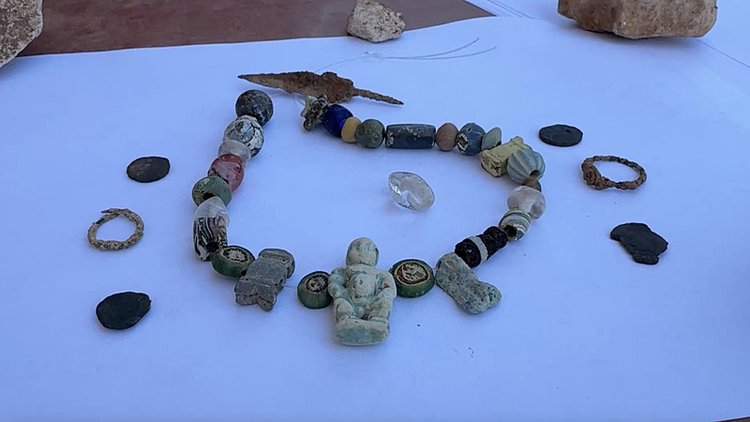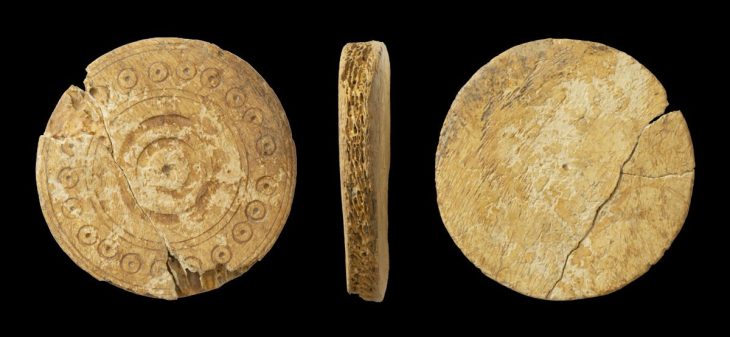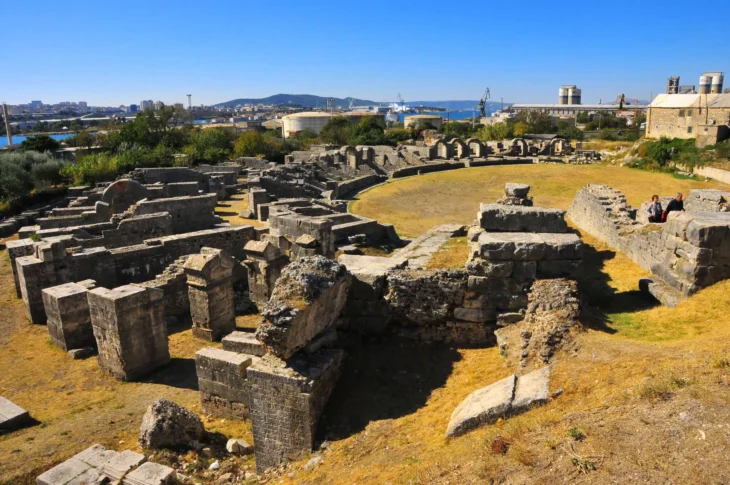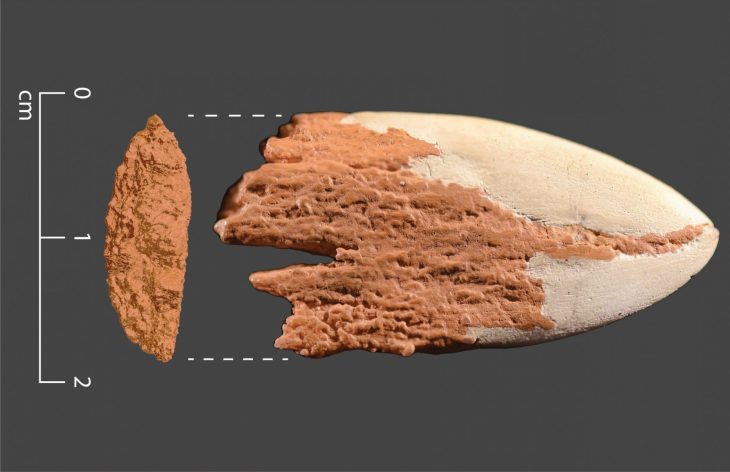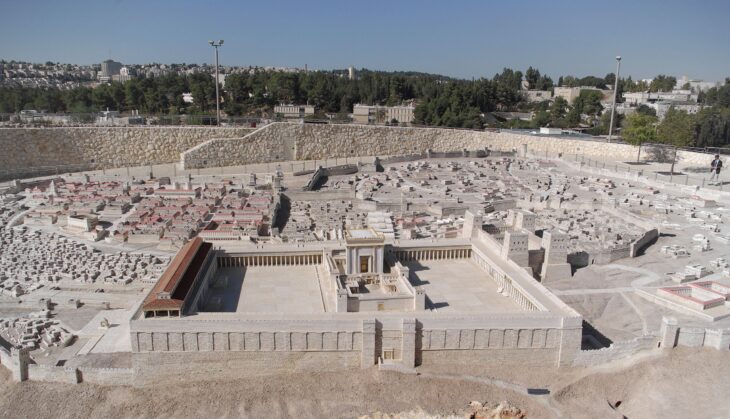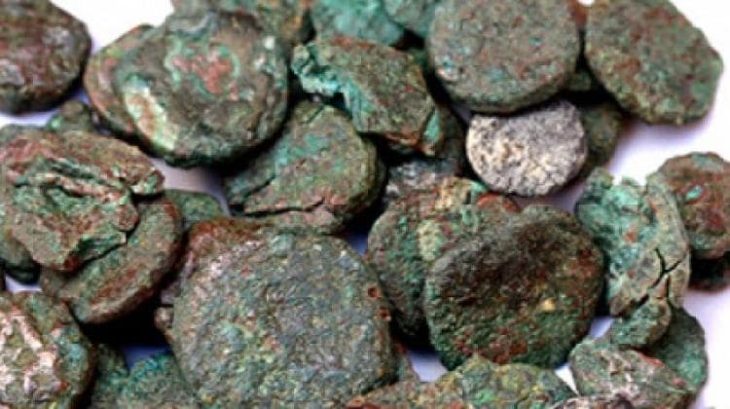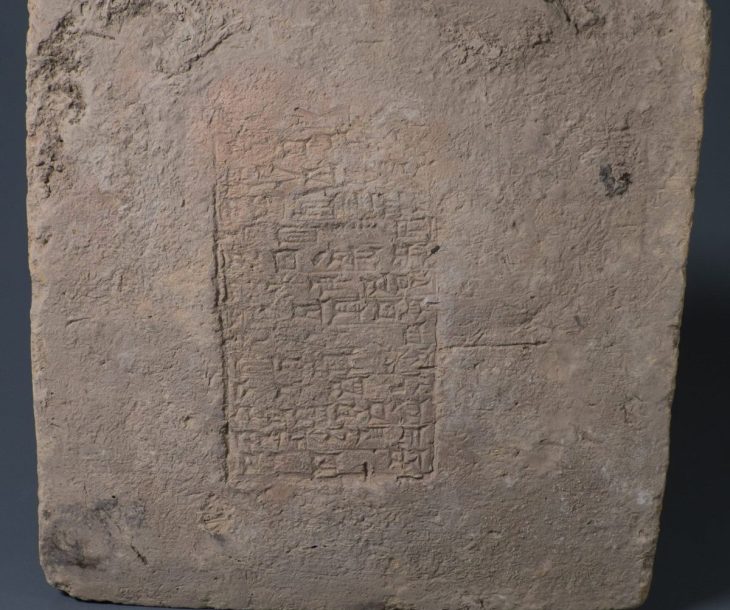In the ancient city of Perre, once a flourishing capital of the Commagene Kingdom in southeastern Türkiye, archaeologists have uncovered a 2,100-year-old rock-cut tomb containing the remains of 14 individuals. Inside the chamber, researchers found amulets, beads, and — most strikingly — a rare statue of the Egyptian god Pataikos.
Believed to be the first of its kind ever discovered in Anatolia, the find sheds new light on how deeply Commagene was connected to the wider ancient world.
The burial chamber, dramatically referred to as the “stairway to eternity,” underscores the cultural richness of Commagene, a kingdom famed for blending traditions from East and West. Together, the tomb and the Egyptian deity provide a rare glimpse into the cosmopolitan world of this ancient crossroads.
A First in Anatolia: Pataikos Emerges in Commagene
Excavation teams led by the Adıyaman Museum Directorate uncovered the tomb filled with beads, amulets, and protective figures. Among these artifacts, the faience statue of Pataikos stood out as a historic first for Anatolia.
Pataikos, a protective dwarf-god in ancient Egyptian religion, was often associated with warding off evil and guiding souls safely into the afterlife. For Mehmet Alkan, Director of the Adıyaman Museum, the find is nothing short of extraordinary.
📣 Our WhatsApp channel is now LIVE! Stay up-to-date with the latest news and updates, just click here to follow us on WhatsApp and never miss a thing!!
“This is the first time such a figure has been encountered in excavations in Anatolia,” Alkan explained. “Its presence in Perre expands our understanding of how far Egyptian beliefs and symbols traveled during the Hellenistic period.”
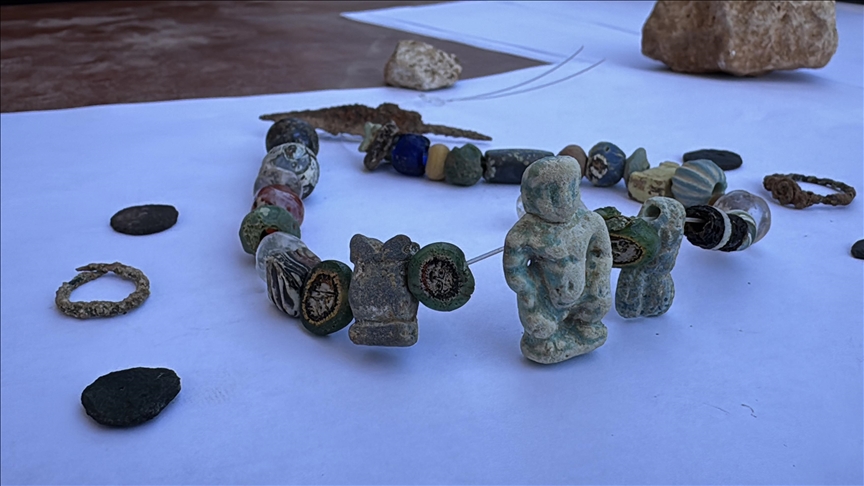
The Tomb: A “Stairway to Eternity”
Equally fascinating is the tomb itself. Carved into rock in a hypogeum style, the 2,100-year-old chamber housed the remains of 14 individuals, likely members of Commagene’s elite. The site is part of a sprawling necropolis where corridors and chambers create a monumental burial complex.
Archaeologists have poetically dubbed the site the “stairway to eternity” — a striking reflection of the belief in an afterlife journey. The combination of local Anatolian burial traditions with foreign symbols such as Egyptian amulets illustrates the cultural fluidity that defined Commagene’s worldview.
Provincial Director of Culture and Tourism Mehmet Yelken stressed the importance of careful excavation:
“Each discovery here adds to our understanding of how Commagene connected with the wider ancient world. The stairway to eternity is more than a tomb; it is a cultural bridge.”
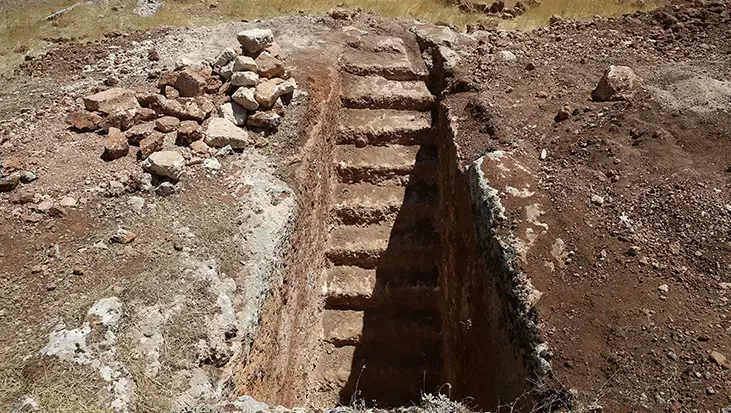
Perre: A Gateway Between Civilizations
Perre, located in present-day Adıyaman in southeastern Türkiye, flourished as a key city of the Commagene Kingdom (163 BCE – 72 CE). Known for its elaborate rock tombs and Roman-era remains, the city served as a hub of commerce, religion, and diplomacy at the crossroads of Anatolia, Mesopotamia, and the Mediterranean.
The Kingdom of Commagene itself is famous for blending Persian, Greek, and Anatolian traditions. Its rulers positioned themselves as heirs to both Eastern and Western civilizations, a vision most famously immortalized at Mount Nemrut, where colossal statues of gods bear the features of multiple cultures.
The discovery of Pataikos in Perre reinforces this image of Commagene as a “meeting place of the gods” — where Egyptian symbols could appear alongside Greek and Persian influences.
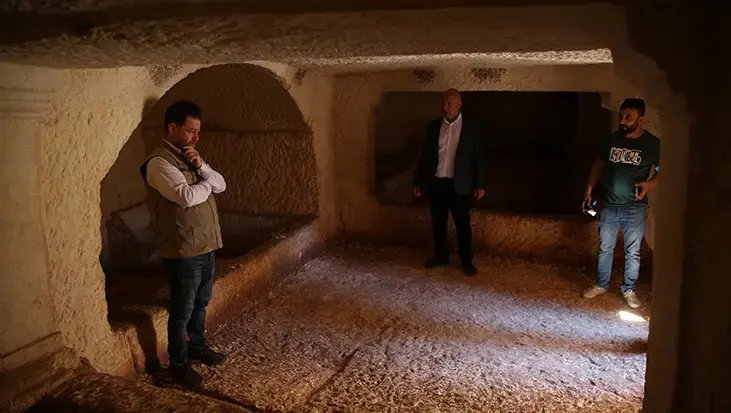
Unexpected Ties with Egypt
While Commagene is best known for its Greco-Persian syncretism, the presence of an Egyptian deity in its burial grounds reveals that its cultural network may have stretched further than previously thought.
Egyptian amulets and protective figures were widely traded across the Mediterranean, but their appearance deep inside Anatolia is extraordinary. The find suggests that Commagene’s elites, eager to showcase their cosmopolitan identity, may have deliberately incorporated Egyptian symbols of protection into their funerary practices.
The god Pataikos, often depicted as a small, protective dwarf figure, was particularly associated with warding off evil and ensuring safe passage into the afterlife — a belief that resonated strongly with Commagene’s funerary traditions. This symbolic overlap may explain why Egyptian artifacts were welcomed into a tomb in Perre.
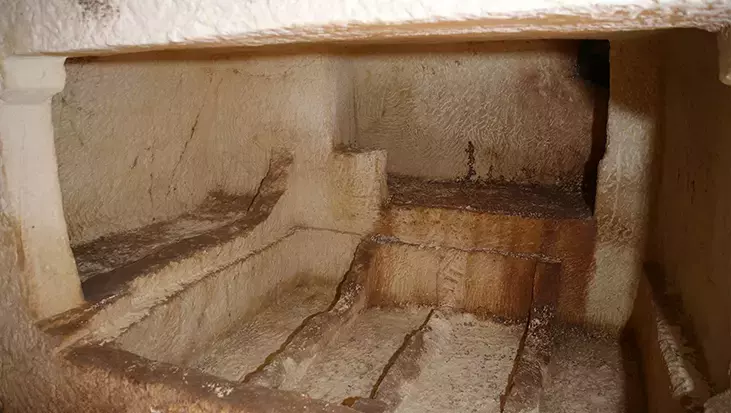
A Crossroads of Cultures Still Revealing Secrets
The find of Pataikos in Anatolia not only enriches Türkiye’s archaeological record but also deepens the narrative of Commagene as a kingdom that thrived on cultural fusion. From Mount Nemrut’s colossal statues to Perre’s Egyptian amulets, the legacy of Commagene lies in its ability to weave together diverse traditions into a unique identity.
As excavations continue, experts believe further surprises may emerge — perhaps more evidence of Egypt’s symbolic presence in Commagene or other artifacts reflecting the kingdom’s vast cultural web.
For now, the tiny figure of Pataikos stands as a powerful reminder: in the ancient world, even gods traveled.
Cover Image Credit: Ali Gazel – Anadolu Agency (AA)

